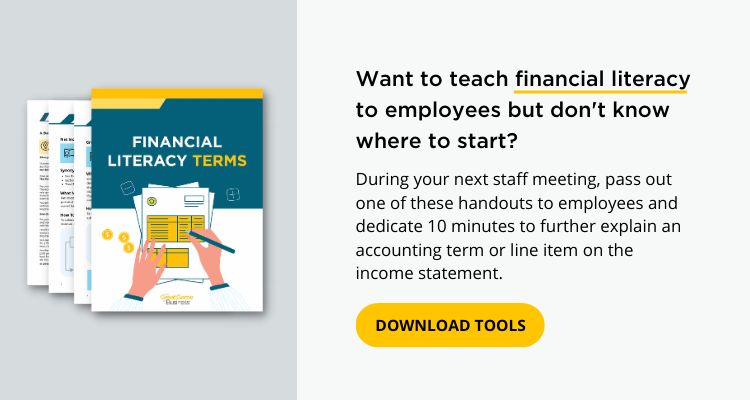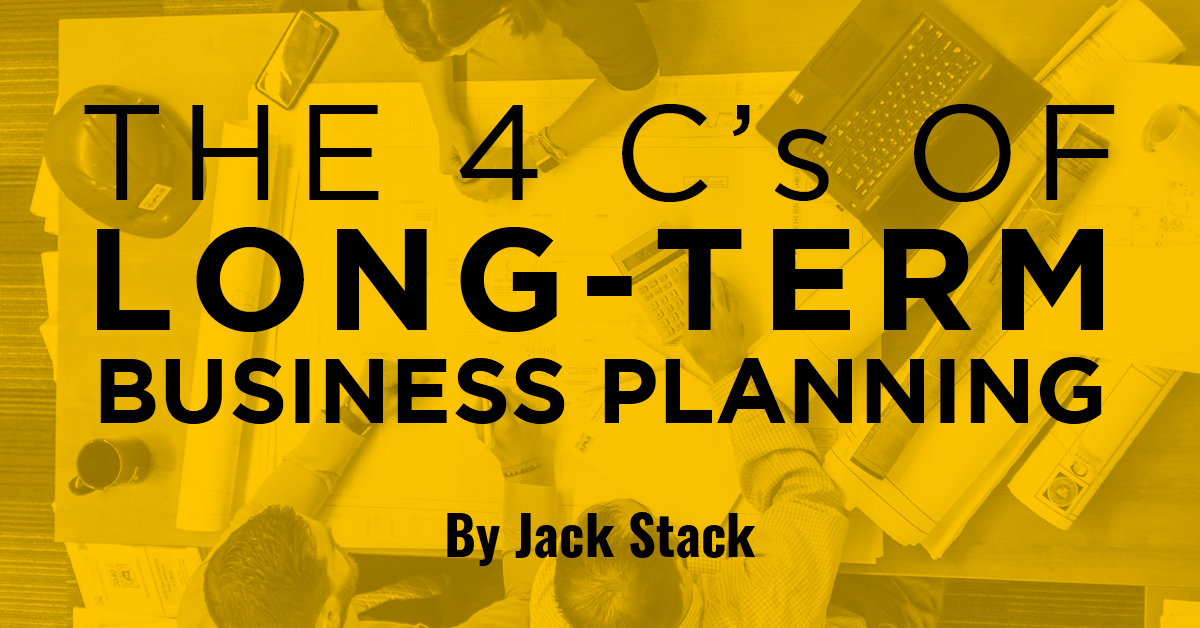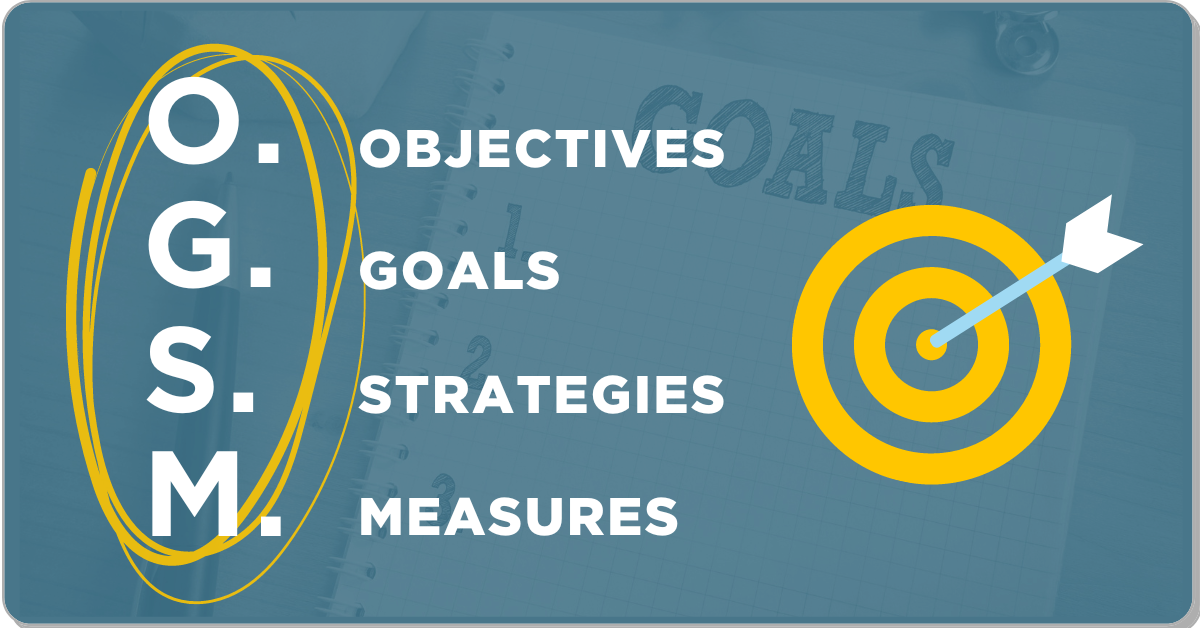
Financial planning is vital to every organization’s success.
It’s the roadmap to where your business is going, and without it, well, it is extremely difficult to organize a successful short- and long-term plan, (let alone define what it means to be “successful” in the first place).
What is surprising to me is, that despite how vital a Financial Plan is to the success of a company, some organizations refuse to properly share theirs with employees.
Throughout this post, we’re going to talk about the relationship between an effective Financial Plan and open-book management, focusing on how and why the most successful organizations view these two practices simultaneously.

The Definition of “Financial Plan” Begs for Financially Literate Employees
In business, a Financial Plan or forecast can refer to an annual financial projection of income and expenses for a company, division or department. It can also be an estimation of cash needs and a decision on how to raise that cash (i.e., borrowing or issuing shares).
“Financial Plan” can also be defined as a combination of information from the three primary financial statements: Balance Sheet, Income Statement and Cash Flow Statement.
Regardless of your definition, the most important things that all Financial Plans must have in order to be effective are:
- Revenue
- Gross Margin
- Profit
- Cash Requirements
- Return of Equity
Every one of the items listed above are found in one or more of those three primary financial statements, making the understanding of them crucial to anyone hoping to, a) follow the Financial Plan, and, b) make any sort of positive effort toward helping the organization realize those plans.
To someone without experience or an education in accounting, finance or business, those words and statements might not mean much, if anything at all.
How many of your employees were formally educated in finance and accounting? Can they all read financial statements? Do they know what all “the numbers” mean?
If you’re practicing the right kind of open-book management they certainly do. Every employee understands because open-book techniques, such as The Great Game of Business®, first teach employees how to be financially literate.
After all, if your employees are not financially literate, well, then, your Financial Plan might as well be in another language!
Do Your Employees Know How They Impact Your Company’s Financial Plan?
In open-book companies, as financial literacy training increases across all members, more people become part of the planning discussion. Instead of having only the senior leaders invested in sticking to the plan, the entire company is part of the financial plan and projections.
Since we know that the three primary financial statements are must-haves when it comes to making your company’s future plans, let’s look at how and why each one matters to your employees.
The Income Statement Impact
The Financial Plan is most often communicated by translating the Business Plan into the Income Statement, showing whether a company is projecting to be profitable or not.
The Income Statement is also where an employee can provide the biggest impact. It only makes sense that the employee understands how to read it.
Within open-book management companies, properly educated employees can read this information and actively and knowingly participate in impacting the Income Statement.
Here are some things that they’ll ask:
- How do sales and marketing team members impact the revenue line?
- How does production impact COGS?
- How does administration impact overhead expenses?
- How does everything work together to impact profit?
Where components of the Income Statement are oftentimes more naturally and openly discussed amongst staff and employees, even in non-open-book companies, the two other financial statements (the Balance Sheet and the Cash Flow Statement) rarely, if ever, see anyone outside of the senior management level.
But employees should be also taught to read these two statements!
Balance Sheets for Well-Being
We all know that the Balance Sheet tracks assets, debt and owner’s equity. Essentially, it is the picture of how healthy your company is as it shows the Return on Equity.
Think about how much an employee can learn about the overall well-being and future of a company—as well as reinforce financial plans—and how this information might motivate an employee.
If your Financial Plan calls for capital investment, it will reflect a change in the assets on the Balance Sheet. These assets are paid for by a reduction in cash or increase in debt.
These are all things that financially literate employees cannot only comprehend but, also, understand how important a return is on that investment. They start searching for ways to ensure that those investments pay off so the company stays in good health. After all, they’re invested in the results—or, for the Great Game of Business playing companies, employees have a stake in the outcome.
Cash Flow Statement
Senior leaders and decision makers understand cash flow and, how critical it is to a company if they want to stay in business. Yet, so many companies fail to share these critical numbers with employees. Employees who are not educated in how to read and understand a Cash Flow Statement might be confused thinking your company has much more money than it does or way less—either way, that’s a scary thing for someone to assume about their company.
Employees who become familiar and educated on the Cash Flow Statement will be able to determine what effect products or projects have on the cash flow of the company at any given time. They will understand (and project) if there will be any time in the upcoming year that will result in cash flow shortage and plan for it accordingly, and they will know when the company can afford to be more creative and risky.
This knowledge will affect their daily routines and behaviors from completing projects earlier (and allowing accounts payable to collect sooner) to adjusting when to replenish office supplies.
Make Your Must-Haves a Discussion with Everyone
Because these three statements are must-haves when creating and maintaining your Financial Plan, it makes sense that your employees, the ones who truly have the largest impact on each of the statements, can read and understand them.
Involve employees in the discussion! Help them become financially literate! You will see the difference.
Other Articles You Might Like:
- Think Outside the Top Line: How Open-Book Management Helps Employees Understand the Bottom Line
- Power Plant Employees Control Costs & Impact Bottom Line
- 4 Common Mistakes with Open-Book Management
.png)















